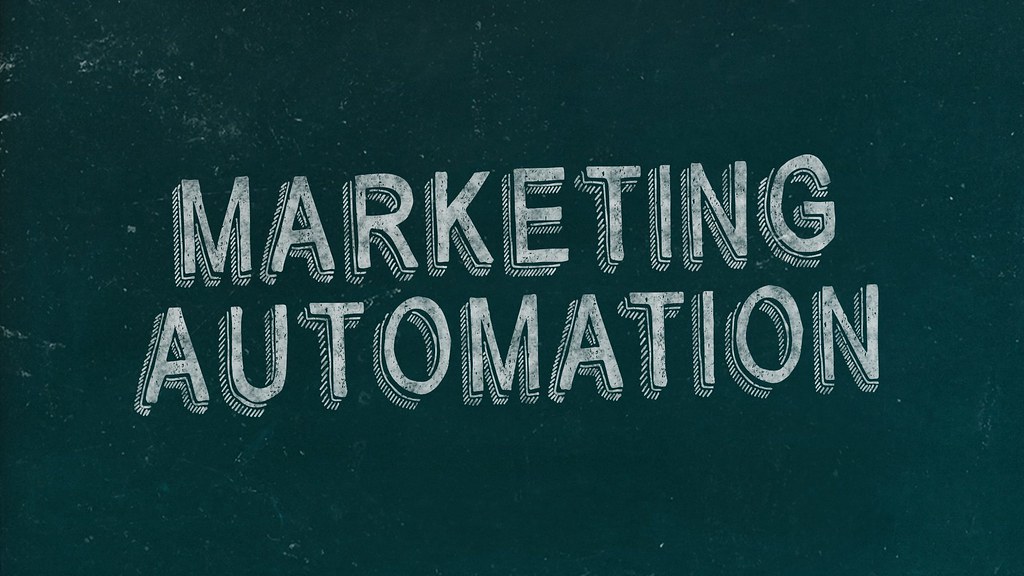Table of Contents
In today’s digital landscape, where competition is fierce and consumer expectations are constantly evolving, businesses must leverage every tool at their disposal to stay ahead. One such tool that has revolutionized the way companies engage with their audience is marketing automation. By harnessing the power of automation, businesses can streamline processes, personalize interactions, and ultimately dominate their market. Here are five power strategies for achieving market domination through marketing automation.
1. Introduction to Marketing Automation
Marketing automation is a transformative approach that empowers businesses to streamline and optimize their marketing efforts through the use of technology and automation tools. At its core, marketing automation involves the automation of repetitive tasks and workflows, allowing marketers to focus their time and energy on more strategic initiatives.
One of the key benefits of marketing automation is its ability to nurture leads and guide them through the sales funnel with personalized and targeted messaging. By leveraging data and analytics, businesses can create highly tailored campaigns that resonate with their audience at every stage of the buyer’s journey. This personalized approach not only increases engagement but also improves conversion rates and drives revenue growth.
Moreover, marketing automation enables businesses to scale their marketing efforts effectively. Whether it’s sending out email campaigns, managing social media interactions, or tracking website behavior, automation tools can handle these tasks efficiently, even as the business grows. This scalability ensures that marketing efforts remain consistent and effective, regardless of the size of the audience or the volume of leads.
Furthermore, marketing automation facilitates better alignment between marketing and sales teams. By integrating marketing automation with customer relationship management (CRM) systems, businesses can ensure seamless communication and collaboration between these departments. This alignment allows for a more cohesive approach to lead management, with marketing delivering qualified leads to sales, and sales providing valuable feedback to inform marketing strategies.
In essence, marketing automation is not just a tool; it’s a strategic approach that empowers businesses to optimize their marketing processes, drive engagement, and ultimately, achieve their business objectives more efficiently and effectively. As technology continues to evolve, marketing automation will undoubtedly play an increasingly integral role in the success of modern businesses.

2. Understanding Your Market
Understanding your market is essential for the success of any business. It involves gaining insights into the needs, preferences, and behaviors of your target audience, as well as the broader industry trends and dynamics that shape the market landscape.
To effectively understand your market, businesses must conduct thorough market research. This includes analyzing demographic data, such as age, gender, income level, and geographic location, to identify key segments within the market. Additionally, businesses should gather psychographic information to understand the attitudes, values, and lifestyles of their target audience.
Moreover, understanding your market requires staying informed about industry trends, market dynamics, and the competitive landscape. This involves monitoring competitors’ strategies, identifying emerging technologies or innovations, and staying attuned to changes in consumer preferences or market conditions.
Furthermore, engaging directly with customers through surveys, interviews, or focus groups can provide valuable insights into their needs, pain points, and expectations. By listening to customer feedback and understanding their experiences, businesses can refine their products or services to better meet customer demands.
Ultimately, understanding your market is an ongoing process that requires continuous monitoring, analysis, and adaptation. By staying informed about your target audience and market trends, businesses can make informed decisions, develop effective marketing strategies, and remain competitive in the ever-evolving business landscape.
3. Crafting Personalized Campaigns
Crafting personalized campaigns is a strategic approach that involves tailoring marketing messages and content to individual customers or specific segments of your target audience. By leveraging data and insights about customer preferences, behaviors, and demographics, businesses can create highly targeted and relevant campaigns that resonate with their audience on a personal level.
One of the key components of crafting personalized campaigns is understanding your audience. This involves gathering data through various channels, such as website analytics, social media engagement, email interactions, and customer surveys. By analyzing this data, businesses can gain insights into customer preferences, purchase history, browsing behavior, and other relevant factors that inform personalized campaign strategies.
Once businesses have a clear understanding of their audience, they can segment their customer base into distinct groups based on common characteristics or behaviors. These segments can then be targeted with tailored messages, offers, and content that address their specific needs, interests, or pain points.
Personalized campaigns also require dynamic content creation that is relevant and compelling to each segment of the audience. This may involve creating customized email templates, landing pages, social media posts, or advertisements that speak directly to the interests and preferences of each segment.
Moreover, personalization extends beyond just the content of the campaign to include the timing and delivery channels as well. By delivering messages at the right time and through the preferred channels of the target audience, businesses can maximize engagement and conversion rates.
Furthermore, ongoing testing and optimization are crucial aspects of crafting personalized campaigns. By monitoring campaign performance, analyzing results, and iterating based on feedback and data insights, businesses can continuously refine and improve their personalized marketing efforts to drive better outcomes.
4. Leveraging Data for Insights
Leveraging data for insights is a strategic approach that involves using data analytics and analysis to gain valuable information and understanding about various aspects of business operations, customer behavior, market trends, and more. By harnessing the power of data, businesses can make informed decisions, identify opportunities for improvement, and drive better outcomes across all areas of their organization.
One of the key aspects of leveraging data for insights is collecting and aggregating relevant data from various sources. This may include customer data, sales data, website analytics, social media metrics, market research, and more. By consolidating data from multiple sources, businesses can gain a comprehensive view of their operations and customer interactions.
Once data is collected, businesses can use analytics tools and techniques to analyze and interpret the data to extract meaningful insights. This may involve performing statistical analysis, data mining, machine learning, or predictive modeling to uncover patterns, trends, correlations, and other valuable information hidden within the data.
Moreover, leveraging data for insights enables businesses to gain a deeper understanding of customer behavior and preferences. By analyzing customer data, businesses can identify trends, preferences, and pain points, allowing them to tailor their products, services, and marketing efforts to better meet the needs of their target audience.
Furthermore, data-driven insights can inform strategic decision-making across all areas of the business, from marketing and sales to product development and operations. By using data to identify opportunities for improvement or areas of inefficiency, businesses can make more informed decisions that drive better results and competitive advantage.
Additionally, leveraging data for insights enables businesses to measure and track the effectiveness of their strategies and initiatives over time. By setting key performance indicators (KPIs) and using data to monitor performance against these metrics, businesses can identify areas of success and areas that require adjustment or optimization.

5. Implementing Automated Workflows
Implementing automated workflows is a strategic approach that involves designing and deploying automated processes to streamline and optimize various tasks and activities within an organization. By leveraging automation tools and technologies, businesses can reduce manual effort, minimize errors, improve efficiency, and enhance productivity across their operations.
One of the key aspects of implementing automated workflows is identifying repetitive tasks and processes that can be automated. This may include tasks such as data entry, document routing, email notifications, task assignments, and more. By analyzing existing workflows and identifying areas where automation can add value, businesses can prioritize opportunities for implementation.
Once potential automation opportunities are identified, businesses can design and configure automated workflows using workflow management software or other automation tools. This may involve defining the sequence of tasks, setting up triggers or conditions for automation, and mapping out the flow of information or tasks within the workflow.
Moreover, implementing automated workflows requires integrating automation tools with existing systems and applications used within the organization. This may involve connecting workflow management software with customer relationship management (CRM) systems, enterprise resource planning (ERP) systems, project management tools, and other business applications to ensure seamless data exchange and communication.
Furthermore, businesses must ensure that automated workflows are designed with scalability and flexibility in mind. As business needs evolve and grow, automated workflows should be able to adapt and accommodate changes without requiring significant manual intervention. This may involve regularly reviewing and optimizing workflows to ensure they remain efficient and effective over time.
Additionally, implementing automated workflows enables businesses to enforce consistency and standardization across their operations. By defining standardized processes and automating their execution, businesses can ensure that tasks are performed consistently and according to predefined rules and guidelines, minimizing variation and errors.

6. Integration Across Platforms
Integration across platforms is a strategic approach that involves connecting and synchronizing different software applications, systems, or platforms within an organization to enable seamless data exchange, communication, and collaboration. By integrating disparate platforms, businesses can streamline processes, improve efficiency, enhance data accuracy, and provide a better experience for users across various departments and functions.
One of the key aspects of integration across platforms is identifying the systems and applications that need to be interconnected to support business operations effectively. This may include customer relationship management (CRM) systems, enterprise resource planning (ERP) systems, marketing automation platforms, project management tools, e-commerce platforms, and more.
Once the systems to be integrated are identified, businesses must establish connections and establish data exchange protocols between them. This may involve using application programming interfaces (APIs), middleware, custom integration solutions, or pre-built integration tools to facilitate communication and data transfer between platforms.
Moreover, integration across platforms enables businesses to create a single source of truth for data, ensuring consistency and accuracy across all systems and applications. By synchronizing data between platforms in real-time or on a scheduled basis, businesses can avoid data silos, reduce errors, and provide users with access to up-to-date information when and where they need it.
Furthermore, integration across platforms facilitates workflow automation and process optimization by enabling the seamless flow of information and tasks between different systems. For example, integrating CRM with marketing automation platforms can automate lead nurturing campaigns based on customer interactions, while integrating ERP with e-commerce platforms can streamline order processing and inventory management.
Additionally, integration across platforms enhances collaboration and communication among teams by providing a unified view of data and enabling cross-functional workflows. For example, integrating project management tools with communication platforms allows project teams to collaborate more effectively, share updates and documents, and track progress in real-time.

7. Continuous Optimization and Testing
Continuous optimization and testing is a systematic approach that involves continuously evaluating and refining various aspects of a business’s operations, strategies, and processes to improve performance, efficiency, and effectiveness. By embracing a culture of ongoing experimentation and learning, businesses can identify opportunities for improvement, optimize existing practices, and drive continuous growth and innovation.
One of the key principles of continuous optimization and testing is the commitment to data-driven decision-making. This involves collecting and analyzing relevant data from various sources, such as customer feedback, website analytics, sales metrics, and market research, to gain insights into areas that require optimization or improvement.
Once potential areas for optimization are identified, businesses can design experiments or tests to evaluate different strategies, tactics, or interventions. This may involve A/B testing, multivariate testing, or other experimental methods to compare the performance of different variables and determine which approach yields the best results.
Moreover, continuous optimization and testing involves setting clear goals and key performance indicators (KPIs) to measure the impact of optimization efforts and track progress over time. By defining measurable objectives, businesses can assess the effectiveness of their optimization strategies and make data-driven decisions about whether to scale, adjust, or abandon certain initiatives.
Furthermore, continuous optimization and testing requires a commitment to iteration and iteration. Rather than viewing optimization as a one-time event, businesses must recognize that optimization is an ongoing process that requires constant monitoring, adjustment, and refinement based on feedback and results.
Additionally, businesses must foster a culture of experimentation and learning across the organization to encourage innovation and continuous improvement. This may involve providing resources and support for testing initiatives, promoting knowledge sharing and collaboration among teams, and rewarding employees for taking risks and driving positive change.
8. Case Studies: Successful Implementations
Case studies of successful implementations showcase real-world examples of businesses or organizations that have effectively implemented strategies, technologies, or initiatives to achieve their objectives and drive positive outcomes. These case studies provide valuable insights into the challenges faced, the solutions implemented, and the results achieved, serving as inspiration and guidance for other businesses seeking to replicate or adapt similar approaches.
One notable example of a successful implementation is the case of Company X, a global e-commerce retailer, which successfully implemented a personalized recommendation engine to enhance the online shopping experience for its customers. By leveraging machine learning algorithms and customer data analysis, Company X was able to deliver personalized product recommendations to each customer based on their browsing history, purchase behavior, and preferences. As a result, Company X saw a significant increase in conversion rates, average order value, and customer satisfaction, leading to a substantial boost in revenue and market share.
Another compelling case study is the implementation of agile project management methodologies by Company Y, a software development firm. Facing challenges with project delays, scope creep, and communication breakdowns, Company Y adopted agile principles and practices to streamline its project delivery processes and improve team collaboration. By implementing iterative development cycles, cross-functional teams, and regular stakeholder feedback sessions, Company Y was able to deliver projects more efficiently, reduce time-to-market, and increase client satisfaction. As a result, Company Y saw improvements in project success rates, employee morale, and overall business performance.
Furthermore, the case of Organization Z, a healthcare provider, highlights the successful implementation of a patient engagement platform to improve patient outcomes and satisfaction. By implementing a comprehensive patient engagement solution that included mobile apps, telehealth services, and personalized health content, Organization Z was able to empower patients to take a more active role in managing their health and wellness. This led to improvements in medication adherence, appointment attendance, and overall patient satisfaction scores, ultimately resulting in better health outcomes and reduced healthcare costs for both patients and the organization.
Conclusion
In conclusion, marketing automation offers businesses a powerful toolkit for dominating their market. By understanding your market, crafting personalized campaigns, leveraging data for insights, implementing automated workflows, and continuously optimizing your efforts, you can achieve unprecedented levels of success. Embrace the power of marketing automation and take your business to new heights.
FAQs
- What is marketing automation, and why is it important? Marketing automation refers to the use of software and technology to automate repetitive marketing tasks. It’s important because it allows businesses to streamline processes, personalize interactions, and achieve better results with less effort.
- How can I leverage data for marketing automation? You can leverage data for marketing automation by using analytics tools to track and measure the performance of your campaigns, gain insights into customer behavior, and identify opportunities for optimization.
- What are some common challenges of implementing marketing automation? Some common challenges of implementing marketing automation include integration issues, lack of expertise, and resistance to change within the organization.
- How can I ensure the security of customer data in marketing automation? To ensure the security of customer data in marketing automation, implement robust security measures such as encryption, access controls, and regular audits. Additionally, comply with relevant regulations such as GDPR and CCPA.
- What are some future trends in marketing automation? Some future trends in marketing automation include the use of predictive analytics, AI-driven automation, and the integration of automation across various marketing channels.









